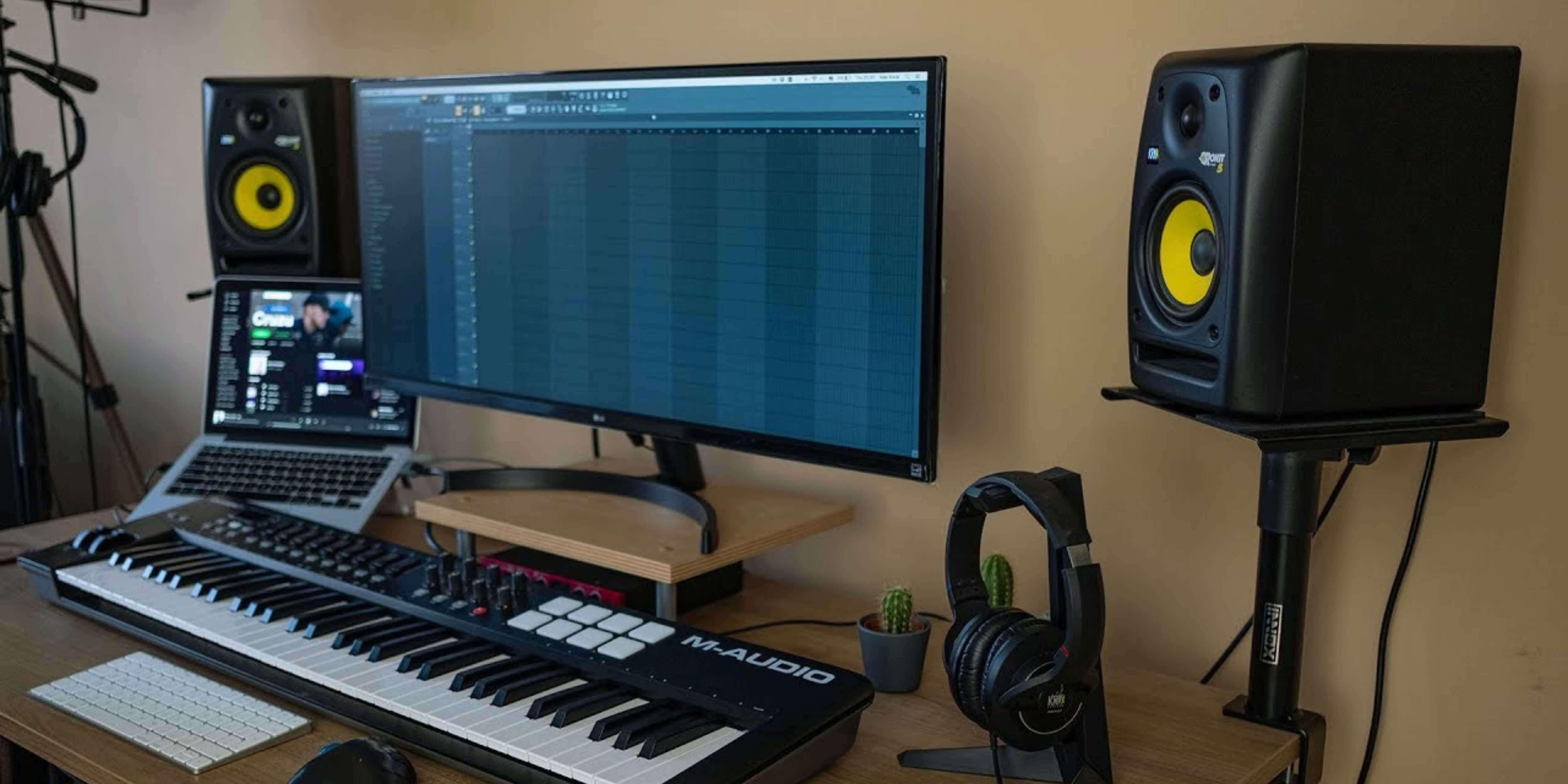Top affordable studio monitors for professional music-making
Image Credit: Simbolics
Near field monitors present little details that we may not notice in our headphones. But professional speakers often have high prices, so affordable studio speakers allow beginners to dip their toes in.
Studio monitors, otherwise known as near field monitors or reference monitors, are the best friend of music producers and artists. Unlike consumer-grade speakers which are often passive like hi-fi, studio monitors are active. Active speakers have an internal amplifier whereas passive systems draw power from an external one. Another difference is that amplification comes after the crossover splits the frequencies into different bands for the drivers. As a result, the reproduction of the signal is far more accurate to an original signal than passive systems – where the amplification occurs before the frequency split – which makes them perfect for monitoring your music.
Bigger drivers may allow for more volume, but that doesn’t mean small studio monitors are redundant. On the contrary, cheap near field monitors will inevitably give you a taste for detailed sound reproduction. And it’s likely that your studio is only a small space – where smaller near field monitors are an optimal choice. However, unless the monitors you choose have RCA inputs then you will need to invest in an audio interface. Though headphones are useful, powered near field monitors allow you experience the full soundstage – from stereo width to immersive depth – of your music.
1. M-Audio BX5 D3 – the best affordable studio monitors for home recording
- $276
- Frequency response: 52 Hz to 35 kHz
- High-frequency tuning options
- Rear resonance port
- One-inch silk-domed tweeter
- Five-inch woven Kevlar woofer
- Crossover: 2.5 kHz
- Input sensitivity: -10 dBu

Fans of the M-Audio BX series will notice the similarities between the D3’s and previous models. For example, the D3’s one-inch silk-domed tweeter and five-inch woven Kevlar woofer are both inherited from the previous BX5’s. We think the M-Audio BX5 D3 studio monitors are the best near field monitors for small budgets thanks to their build and tuning options.
Both the woofer and tweeter are magnetically shielded, and the rear bass port enhances the projection of low-end without straining the speaker driver. Also on the back of the speaker sits a variety of controls and inputs. These include a Volume control, both XLR and 1/4″ jack inputs, and settings for adjusting the output of low end (Flat, -2dB and -4dB) depending on the acoustic space and positioning of monitors. What’s special about the BX5 D3s is that you can connect both the XLR and 1/4″ jack inputs simultaneously.
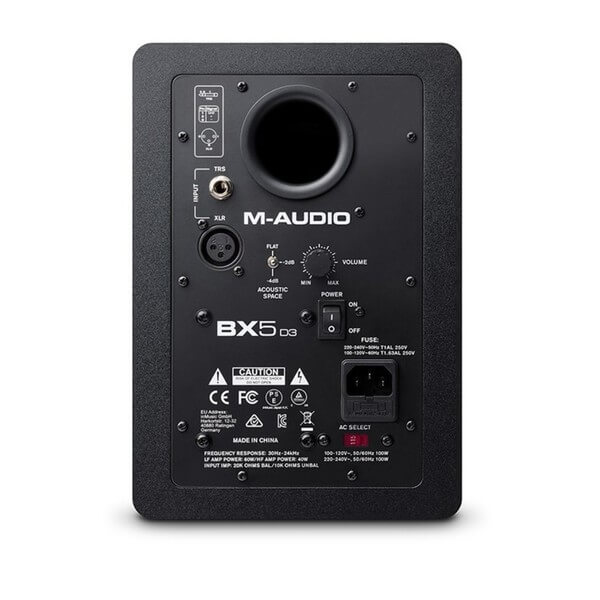
Like with previous models, the bass port does hype frequencies a little too much. Therefore you may find you’ll have to use the -2dB Acoustic Space setting.
M-Audio has upgraded the onboard Class AB bi-amplification. Now, the woofer receives 60 Watts and the tweeter 40 Watts – with the frequency crossover at 2.5kHz. Around the woofer and tweeter is a ring of rubber, just like previous models too. The tweeter, though, has seen a bit of an upgrade. It’s got a new and improved tweeter waveguide which allows for a broader dispersion of sound. As a result, the listening sweet spot is wider.
2. KRK Classic 5 – the best studio monitors for electronic music production

- $269
- Frequency response: 46 Hz- 34.5 kHz
- High and low-frequency tuning options
- Front-resonance port
- 1″ textile soft dome tweeter
- 5″ glass aramid composite woofer
- 0 dBu
The Classic 5 monitors have a 5-inch woofer that does deliver some solid bass. A slight flaw is that the mids do lack ever so slightly, but the soft dome tweeter does give a crisp high end that sounds fantastic. The woofers and tweeters themselves are made with high-density foam pads that isolate the sound from the surface. The monitors are also bi-amplified with an automatic limiter to help prevent blowouts. They feature a low resonance enclosure, so you get a cleaner sound.
Though the mids do lack slightly, this won’t matter too much when you’re just starting out. It’s unlikely that you’ll be mixing complicated music with a lot of tracks. But if you find that the lack of mids is holding you back, you can get yourself some studio headphones for a reference. With these two tools, you’ll notice all the little details that matter. With that said, using both studio monitors and professional-grade headphones is always a good idea if you want a professional mix.
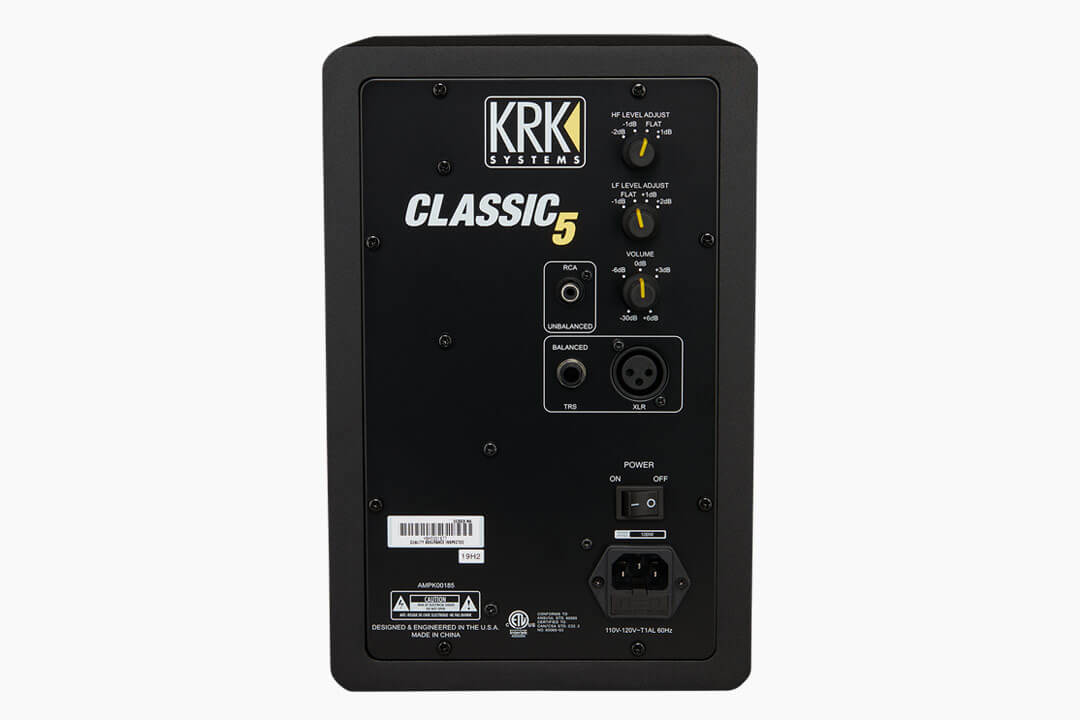
Furthermore, on the rear are both high and low-frequency controls for adjusting the sound depending on your acoustic space like the D3s. Inputs include 1/4″ jack, XLR, and RCA connections. So the Classic 5’s are great for musicians, producers, and DJs!
3. JBL 305P MKII – best studio monitors for a good listening sweet spot
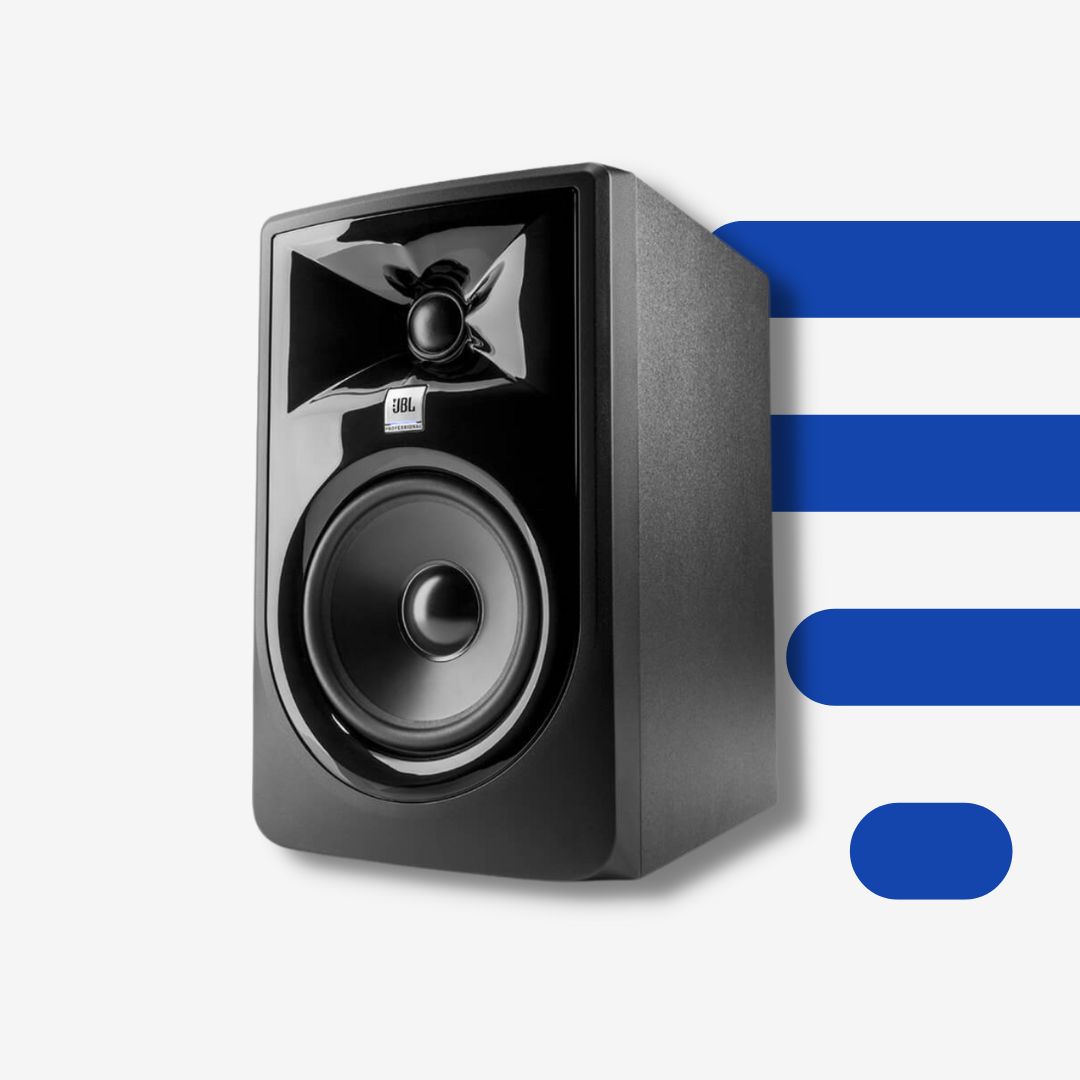
- $298
- Frequency response: 43 Hz – 24 kHz
- High-frequency tuning and boundary EQ
- Rear resonance port
- Patented Image Control Waveguide for detailed imaging and a broad, room-friendly sweet spot
In the 305P MKII, JBL’s own patented Image Control Waveguide allows for a wider listening spot than other studio monitors – especially at this price point.
Moreover, the low-frequency response offers more low-end than previous models so over-compensating in the mix stage is less likely. Like with the Mackie’s, using headphones as a reference will help you in this mission too. However, when it comes to sound quality JBL has included technology they have previously developed for their higher-end studio monitors. The double-flared port allows for more precise projection of low-end without straining the woofer as just one example. Despite this, you may notice a slight hiss while playing music at lower volumes. It isn’t uncommon for studio monitor drivers to give a slight hiss, but at higher volumes, you won’t notice it.
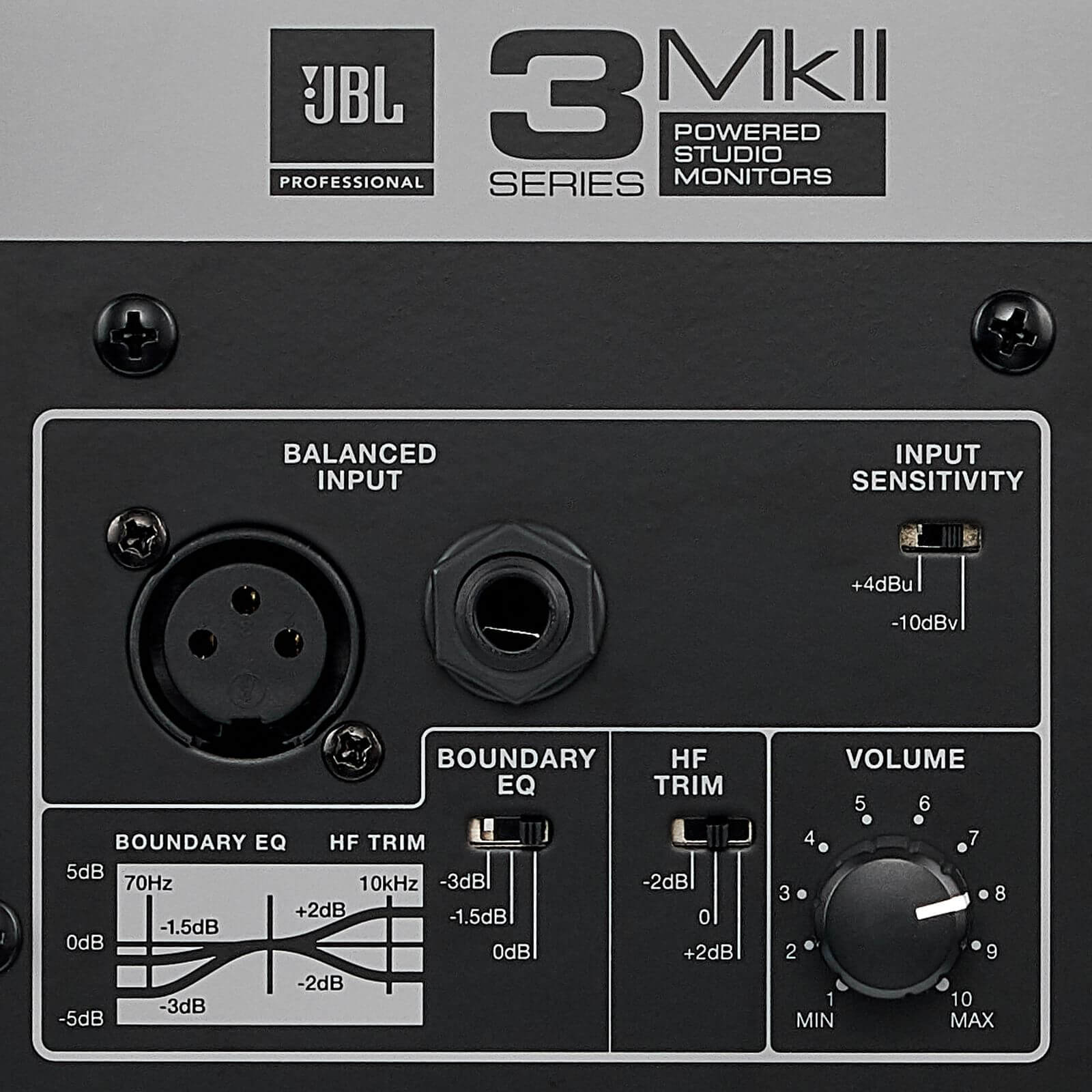
The JBL 305P can reach a maximum output of 108dB. That’ll be plenty loud in a small studio, but it’ll suit medium-sized studios too. In a bigger sized room studio, a subwoofer will be a good idea – just be sure to turn it off when you’re mixing mids and highs. But a better option for bigger studios may be looking at 8-inch studio monitors rather than 5-inch ones.
4. Mackie CR4-X – most affordable studio monitor speakers
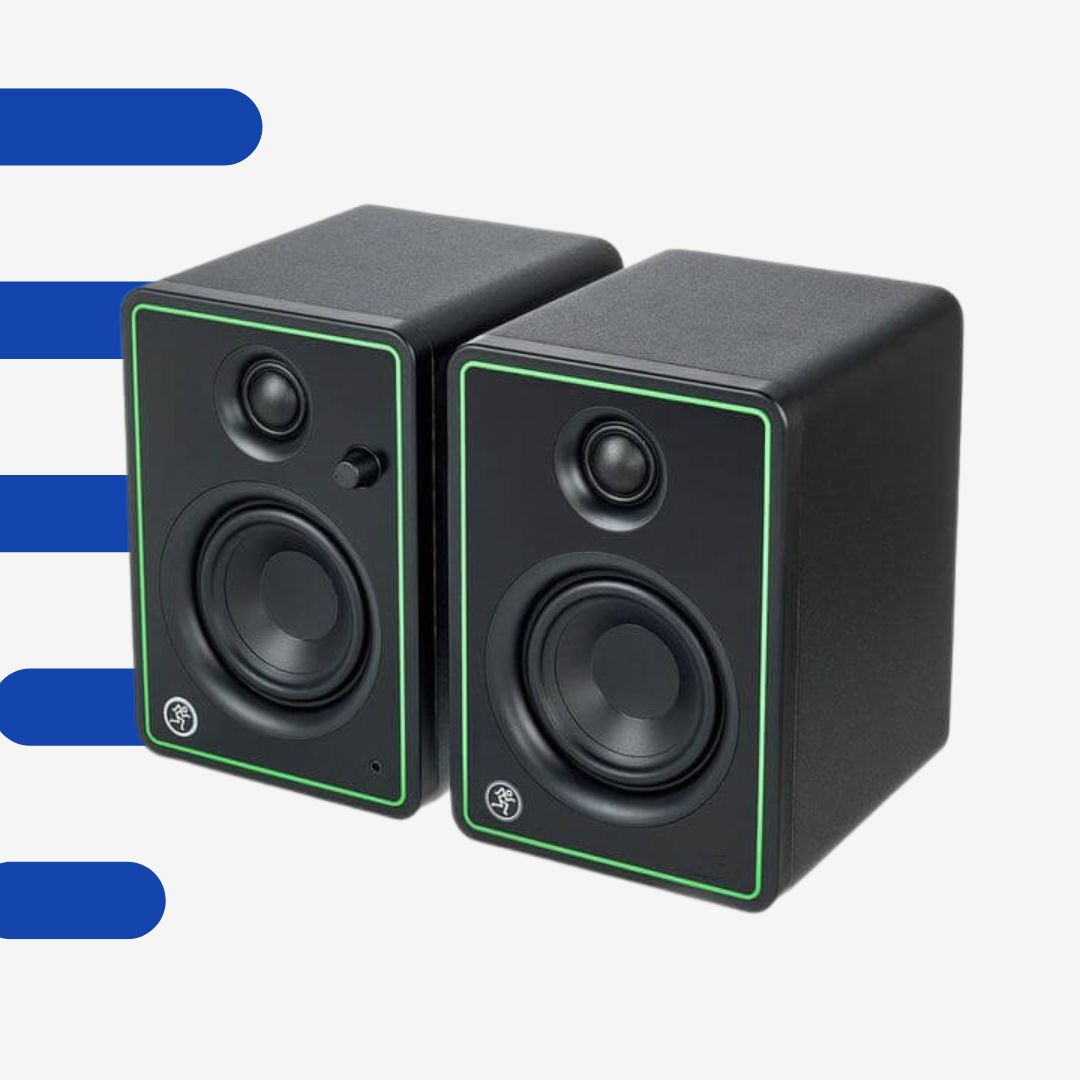
- $149.99
- Frequency response: 65Hz – 20kHz
- Rear resonance port
With the idea of using both studio monitors and studio headphones to record and make music in mind, let’s talk about the CR4-X. The bass response is a little pronounced in these entry-level speakers, so making use of headphones will be important if you don’t want to undercompensate on your bass channels. Unlike other monitors on our list, there is no tuning available.
With that said, the CR4-X speakers are really better suited to multimedia applications. But at this price point, they will certainly do the job while recording and producing music. In contrast to the bass response, the mid frequencies are transparent and present a defined difference between tones. As for the high frequencies, they’re sharp and don’t present any harshness.
One thing you can do to improve your experience is to invest in better cables. The provided tables are a little… underwhelming. But the sound quality will improve with better quality cables, as is the case with a lot of other stock studio monitor cables.
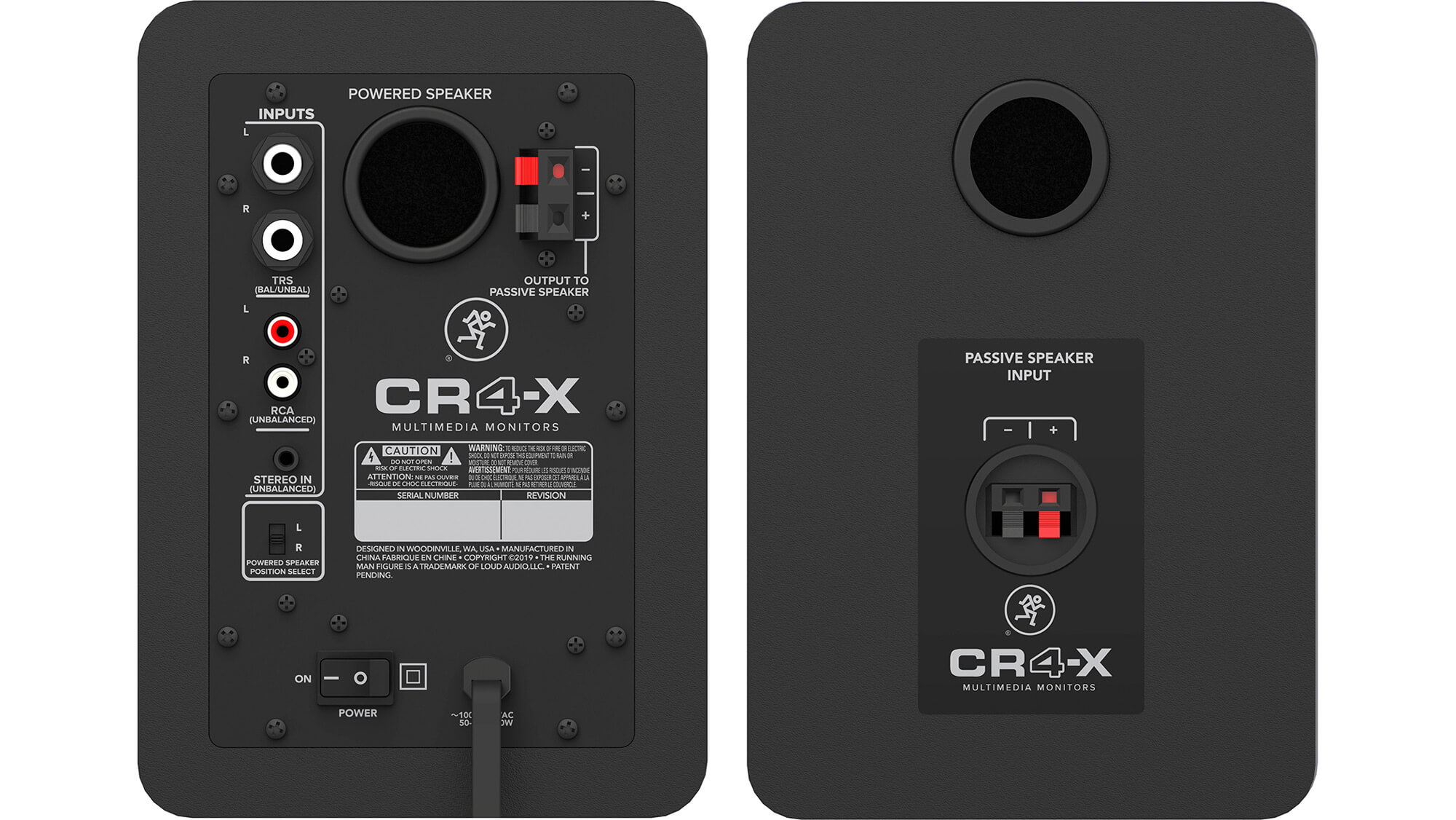
The Mackie CR4-X studio monitors have a 4-inch polypropylene-coated woofer, and a 0.75” ferrofluid-cooled silk dome tweeter. Silk is a desirable material for tweeters as it tends to reproduce high frequencies with better quality. The woofer, though, also delivers a crisp and punchy sound. On the back is a bass port which projects the low-end frequencies well with enough depth too.
5. PreSonus Eris E5 – best near field monitors for small studios
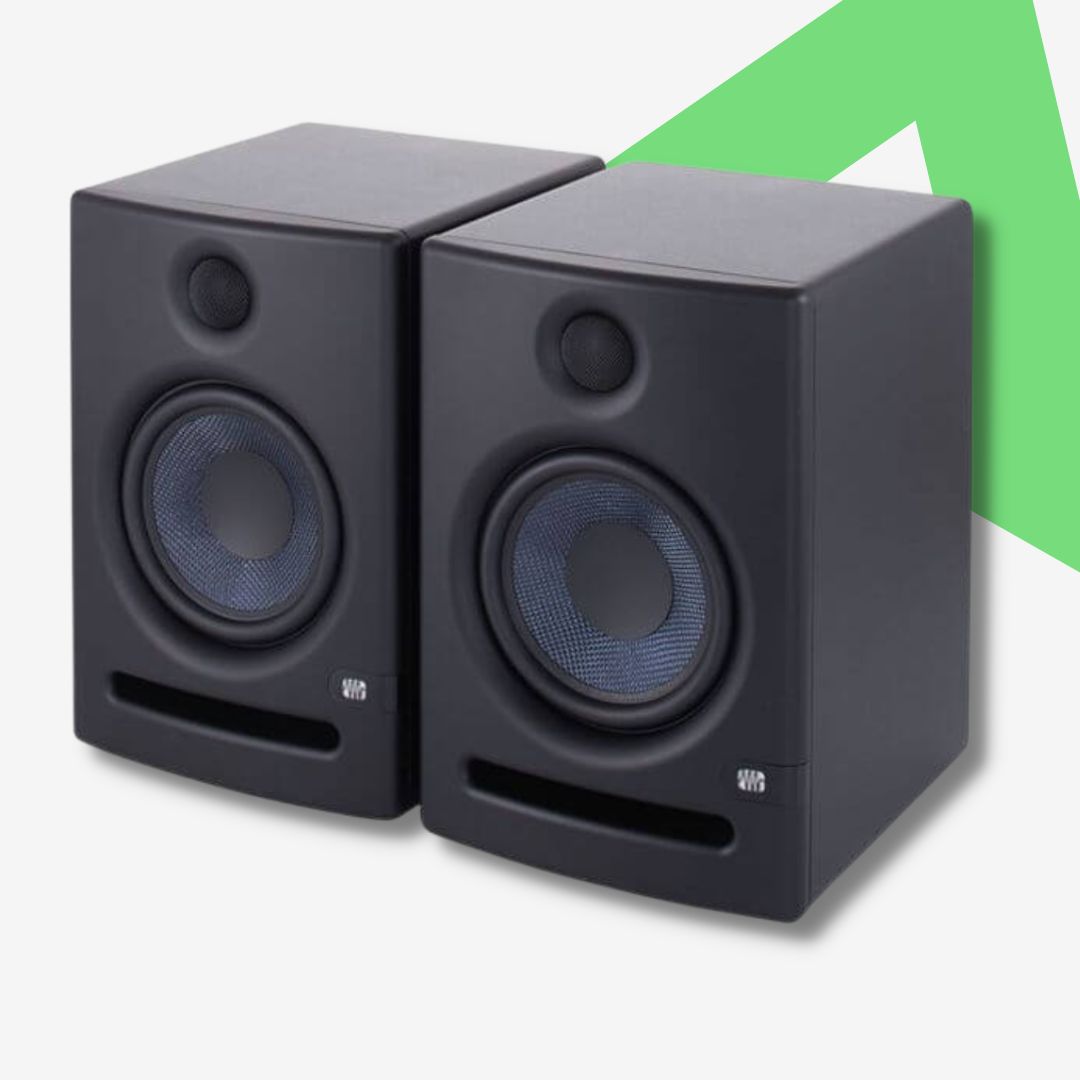
- $249
- Frequency response: 53 Hz – 22 kHz
- Front resonance port
- High and mid tuning options
Finally, we have the Presonus Eris E5. Their frequency response is fairly flat, and they have well-defined mids. However, despite their crisp highs, these could do with a little adjustment if you want them to be closer to flat – which of course you do. But the bass frequencies aren’t as well defined as the mids. Yet the Eris E5 studio monitors will display details that you may have previously missed. At just 10.2 lbs. (4.63kg), these monitors are pretty lightweight too.
At this price point, it’s nice to see Kevlar low-frequency inducers as in the M-Audio BX5s. This is a strong heat-resistant material, and you’ll find it in many – if not all – high-end speakers. You’ll find your speakers continue to perform with ease over long periods of time. With this material too. And despite extra shielding for minimizing interference, you may still notice a hiss at low volume as with other speakers we’ve mentioned.
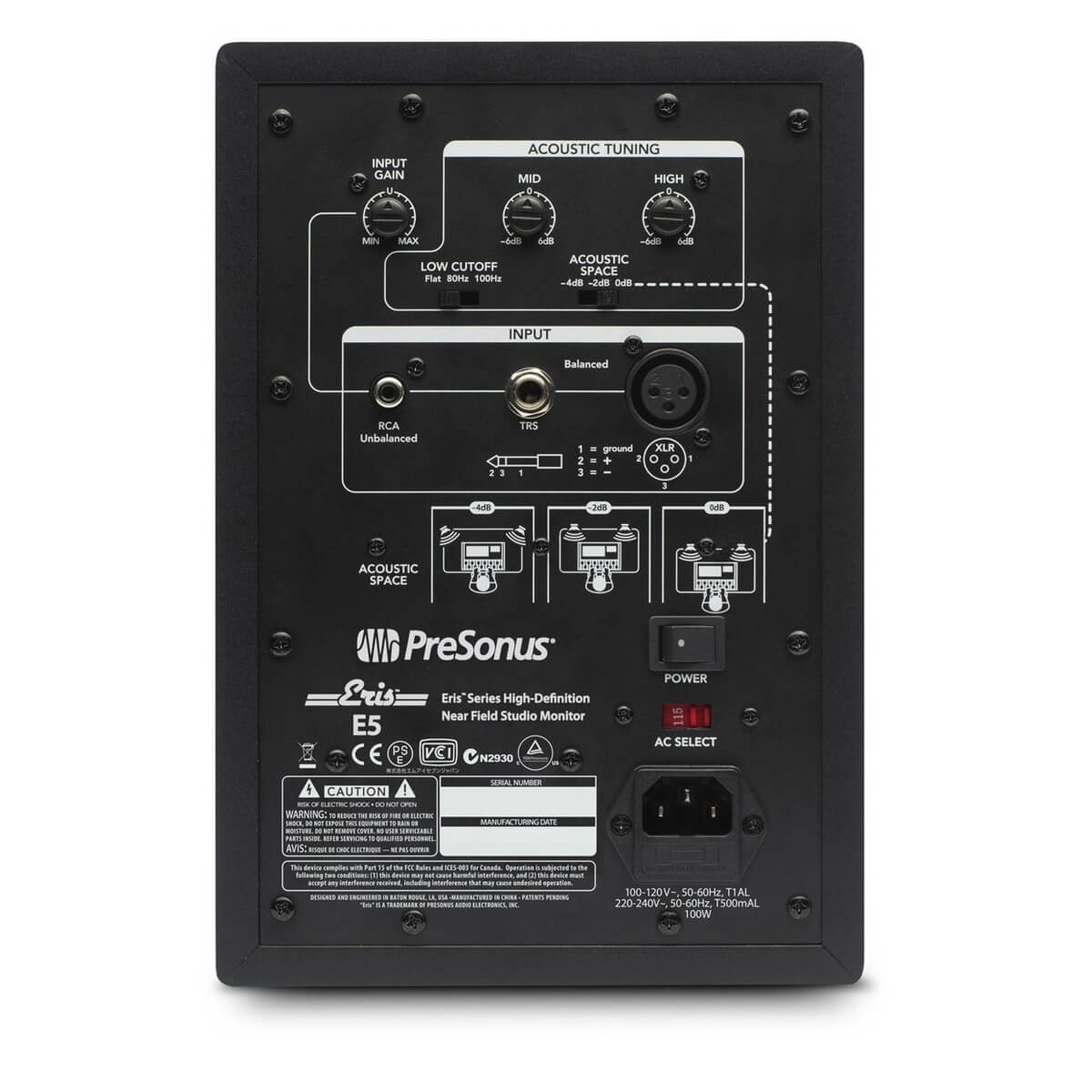
The Eris E5’s peak at 102dB, so they’re not overbearingly loud. Again, this makes them a good choice for smaller studios. The low/mid-woofer has a size of 5.25 inches. For its size, it produces a punchy low-end and kicks are also well defined!
You can make mid and high EQ adjustments at the rear of the speaker with knobs. If your studio has reflective surfaces and no sound treatment you’ll want to attenuate these knobs. Coupled with good monitor placement, changing the acoustic space with these controls enables you to take full control over the sound of your monitors. In addition, the speakers have a front bass port – so you don’t need to worry about the rear wall quite so much.
